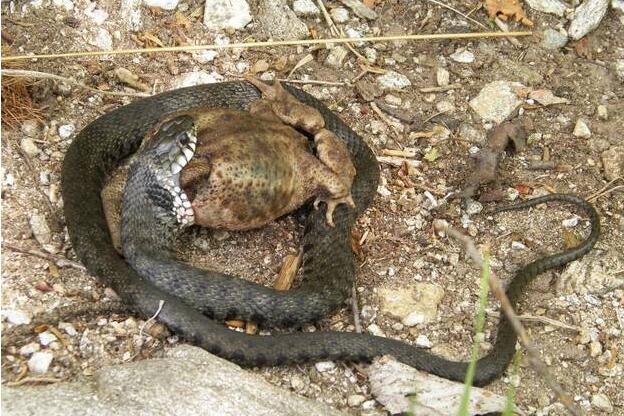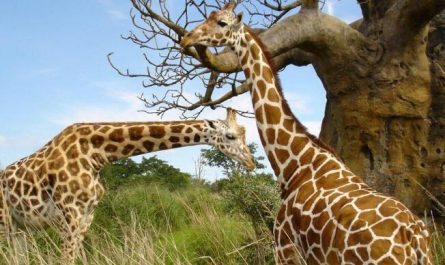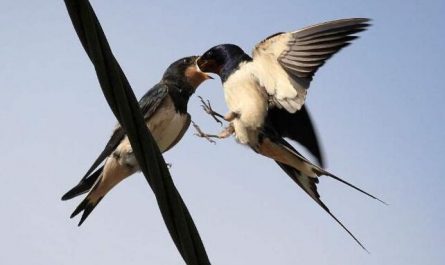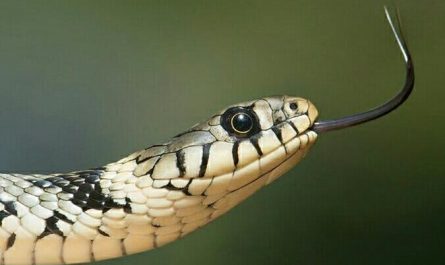The reason why a snake can swallow an animal larger than its head
Like us, the mouth can only open up to 30 degrees, but snakes can open up to 130 degrees! The reason is that the bones related to the opening and closing of the snake’s head are different from other animals. The several bones of the snake’s head connected to the chin and the bones between the left and right chin and chin are movable, unlike other animals that are fixed to the head.
Therefore, the snake’s mouth can not only be opened up and down, but also is not restricted from the left and right. It can be expanded to a certain extent, so that it can swallow something much larger than its mouth. Although the snake’s mouth shape is very clever, before swallowing, the captured animal must be processed: it squeezes the animal into a long strip, and when swallowing, the food is delivered with the help of hook teeth. Into the throat. Since the snake’s chest does not have a breastbone, the ribs can move freely, so the food swallowed from the throat can directly enter the swollen belly; at the same time, the snake also secretes a lot of saliva, which is tantamount to adding a lot of “lubrication” oil”!
Snakes are very sensitive to every joint involved in feeding, especially the joints between the mandible and the skull are very loose. The left and right sides of the lower jaw are also different from other animals. They are not closely connected, but connected by the looseness of ligaments. Therefore, the snake’s mouth can be opened to 130 (a human mouth can only be opened to about 30), and the two halves of the lower jaw can be expanded to the left and right together, or independently or alternately expanded to one side. Whenever a snake bites food, the upper jaw, palatine bone, wing bone and mandible can alternately pull the food back, and the upper and lower jaw bones can also wrap the food in the front. At the same time, because snakes have a breastbone and a chest cavity, their gastrointestinal muscles are so powerful that they can swallow animals that are several times larger than their heads.
Under normal circumstances, the greater the food, the greater the effort it takes for the snake to swallow. Small foods generally take only one to two minutes to swallow, but larger foods sometimes take an hour or longer. Whenever food is swallowed into the esophagus, the body wall of the snake will gradually expand, because the body wall muscles contract in sequence, and the food will quickly enter the stomach. Snakes are very capable of digestion. Except for bird feathers and animal hairs that cannot be digested, everything else can be digested, and even bones are not left.
Life habits of snakes
Snakes, belonging to the class Reptiles, and suborders of snakes, are true terrestrial vertebrates. Poisonous snakes are scary, but as long as you pay attention to them, they are not so dangerous. Snakes are mainly mouse-eating (also frog-eating, birds, etc.). Snakes are not good looking, have strange shapes and colors, are covered with scales, have a high head and neck, swing their trunks, move fast, call for partners, call for swimming, and are realistic Hard to be cute. Snakes like to live in shade, damp, inaccessible, overgrown with weeds, lush woods, mortar tree holes or piles of rubbish, firewood haystacks and ancient ridge earth walls, and rich bait environment, these are their habitat Some snakes live in the water in places where they live, appear and multiply.
They live in the tomb cave, and there are thick and granular feces at the entrance of the cave, so we know if there is a snake in the cave. Snakes have the habit of hibernating. In winter, they sleep in a cave for several months. They do not eat or drink, and keep their strength motionless. In windy and sunny weather, I occasionally come out to bask in the sun and sometimes eat. When the spring flowers bloom, the snake wakes up, starts to go out for food, and takes off its original coat. When molting, a liquid is secreted between the old and new skins of the snake, which helps the snake to shed its skin. From the diameter and length of the snake’s coat, the weight and the name of the snake can be measured. Soon after the snake shed its skin, the amount of activity increased, the amount of foraging increased, and the body condition gradually recovered. As the temperature gradually rises, it enters estrus from late April to early mid-May. When looking for a spouse, the male and female snakes screamed clearly and brightly, like the sound of hitting a rock.
The spawning period of snakes is generally from late April to early mid-June, depending on the species. Snake eggs are generally glued into a large egg mass, and the number of eggs in the egg mass varies from 8 to 15. Snakes are often hungry or half hungry. It usually preys by “waiting for the rabbit”, but sometimes it takes the initiative to attack. The author once witnessed a green bamboo snake chasing a frog by the river. The frog jumped into the river, and the snake also jumped into the river, just like two diving athletes one after another. I have also seen snakes preying on bird eggs. It quietly climbed up the wall near the eaves, swam to the side of the house swallow’s nest, kept sticking out its tongue, and scared away its relatives. When the snake finds its eggs, it attacks and entangles first, and when it’s safe, it opens its mouth and swallows the date. Don’t think that its mouth is small. In fact, it can swallow food 8-10 times the size of its head. After eating enough food, the snake feels tired and enters a resting state. At this time, it is easy to be caught. As for the number of foraging snakes, it varies with snake species and size. Generally, during the peak period of summer foraging activities, especially during the spawning and breeding period, once a day or every other day. Snakes with a slightly larger body usually eat once every 3 days to a week due to their larger foraging. Snakes also like to sunbathe in the sun, usually around 10-12 o’clock in the morning. When sunbathing, they usually lie down on the ground or entangled on tree trunks. There are also half-body exposed outside the cave, curled up outside the pile of stones, and their postures vary widely. The activity pattern of snakes is mostly day and night, which varies from species to species.
Snakes have a very powerful digestive system. Some of them start to digest as they swallow, and even spit out their bones. In addition, the snake’s digestion also depends on crawling on the ground, using its belly to rub against uneven ground.
The venom of venomous snakes is actually the digestive juice of snakes. Some snakes’ digestive juices have a strong digestive capacity and dissolve the body of the bitten animal, so they show “toxicity”. Human bile is also this kind of digestive juice. But more are neurotoxins and muscle toxins.
Snakes have a strong appetite and a large appetite. They usually bite to death before swallowing. The mouth can change with the size of the food. When encountering larger foods, the lower jaw shortens and widens, becoming a film that tightly wraps the food. Snakes often start from the head of the animal, and swallow birds from the top of the head. In this way, the beak of the bird bends toward the neck of the bird and will not hurt the snake’s mouth or esophagus. Swallowing speed is related to the size of food. Snakes can swallow mice in 5-6 minutes, and larger birds need 15-18 minutes. Barton believes that African rock pythons only begin to swallow when they determine the position of the nose or ears of the prey. Vipers also have the ability to judge the head and tail of their catch.
Snakes digest food very slowly. It takes 5-6 days to complete the digestion after each meal, but the peak of digestion is usually 22-50 hours after eating. If you eat a lot, it will take longer to digest. The digestion speed of snakes is related to the outside temperature. Skoczylas (1970) observed that the digestion of swimming snakes stopped completely at 5°C, and the digestion was still very slow at 15°C. The digestion process took about 6 days. At 25°C, Digestion is accelerated.
The snake’s teeth cannot crush food. The snake’s digestive system, such as the pharynx, and the corresponding muscle system have great expansion and contraction capabilities.






